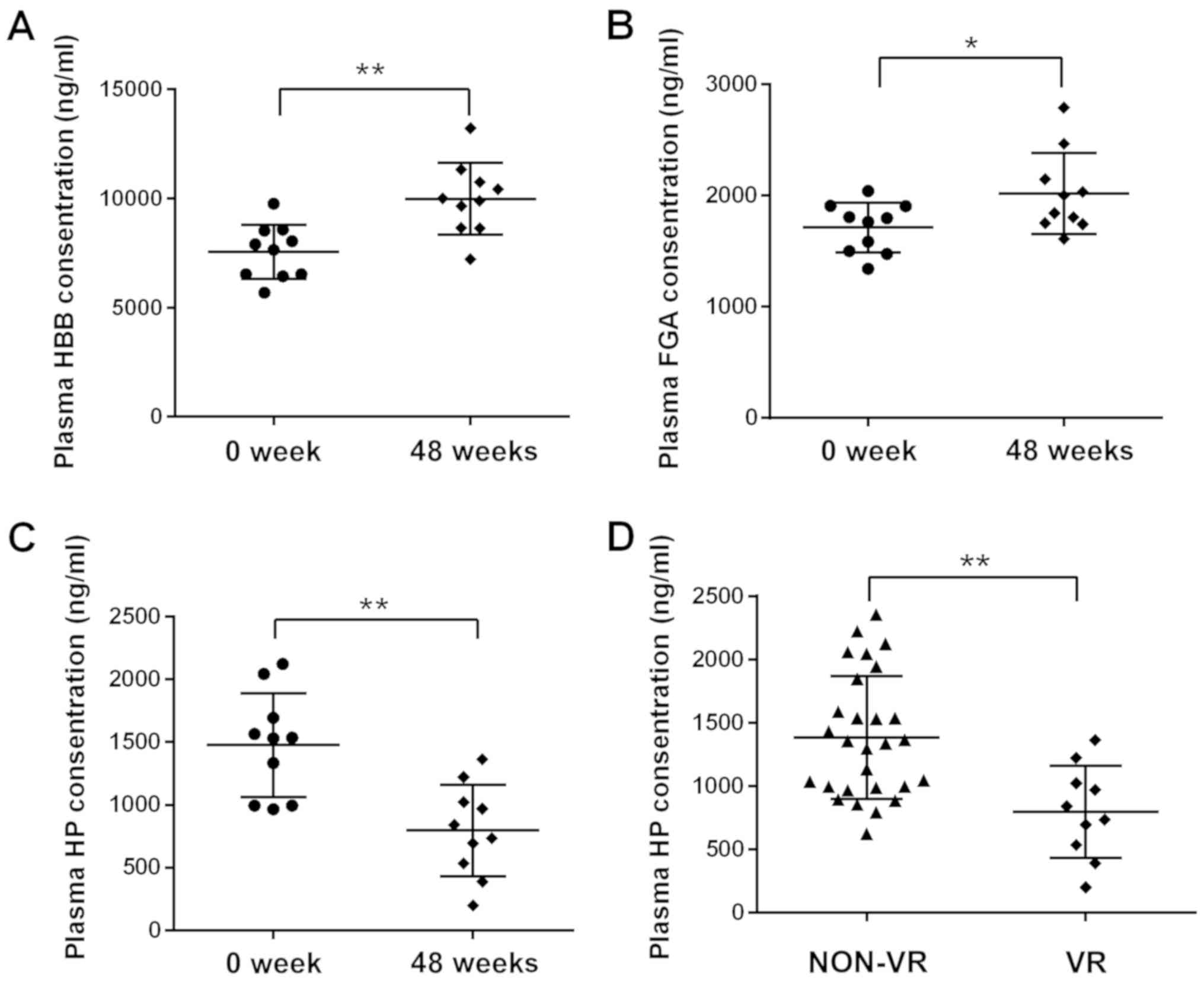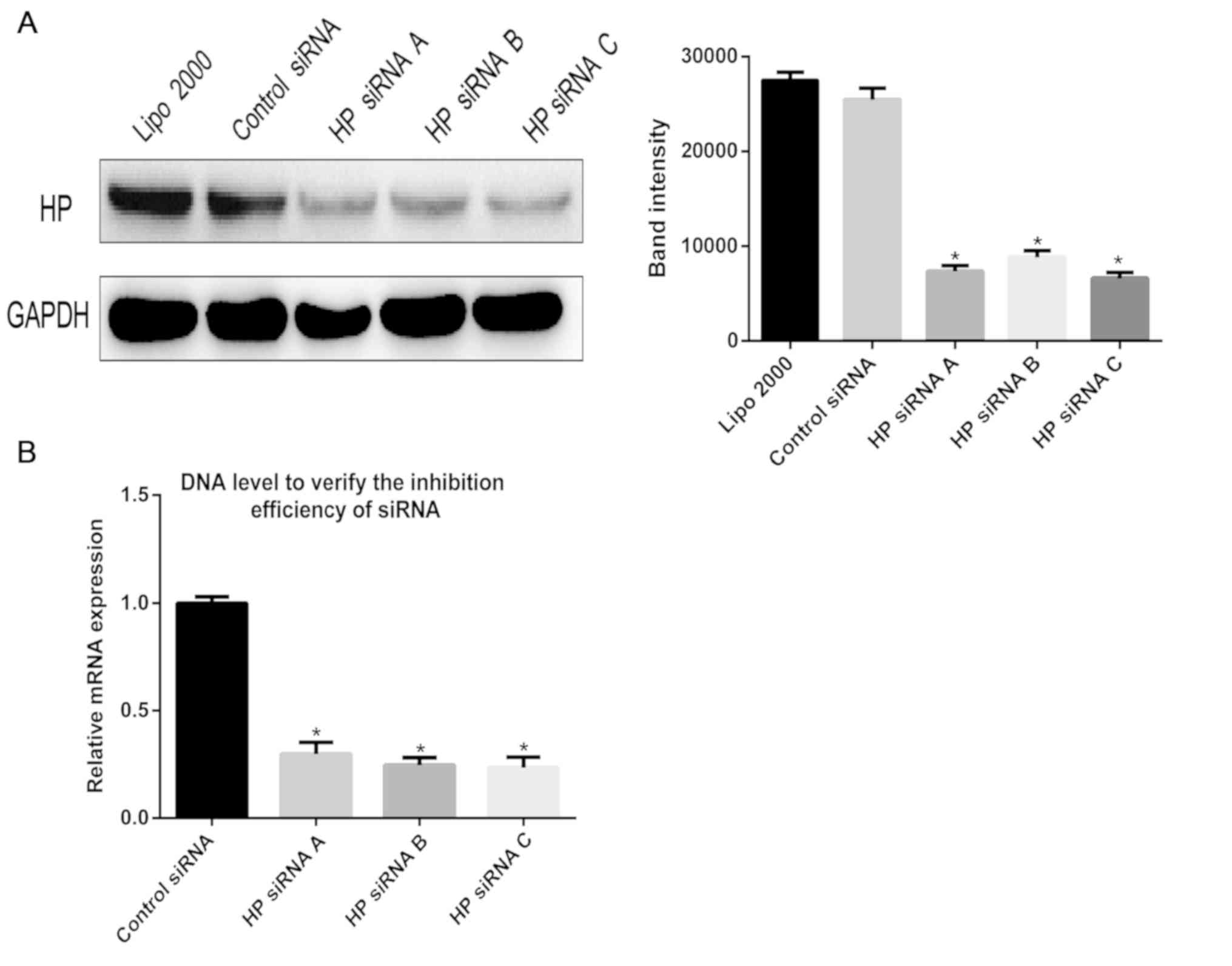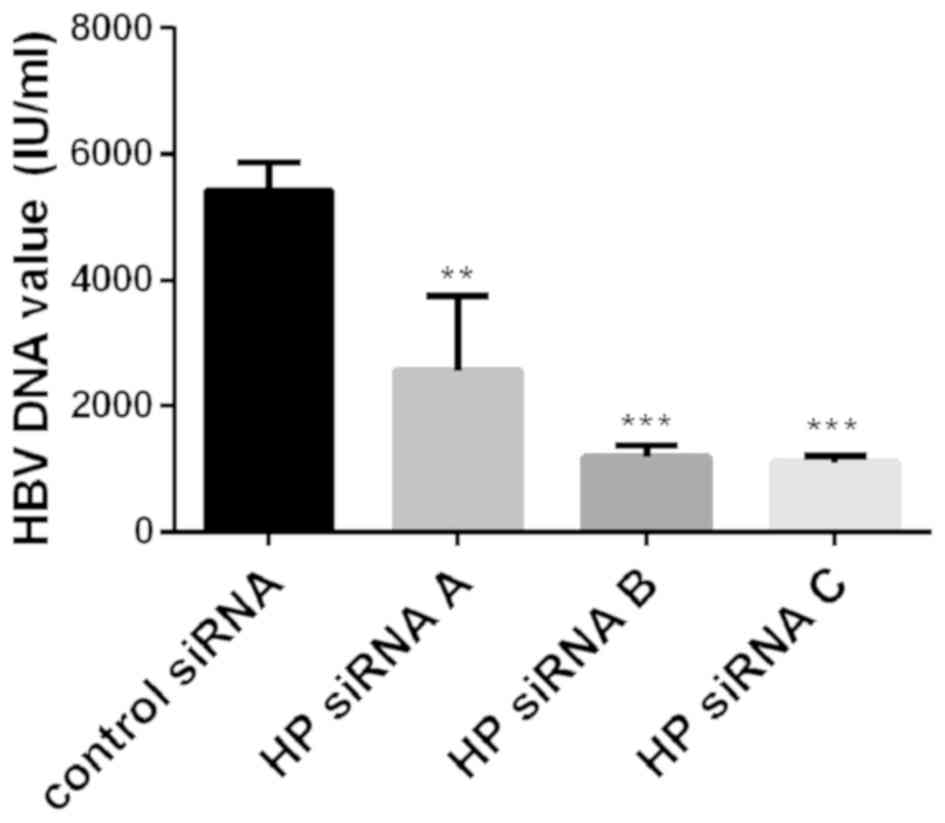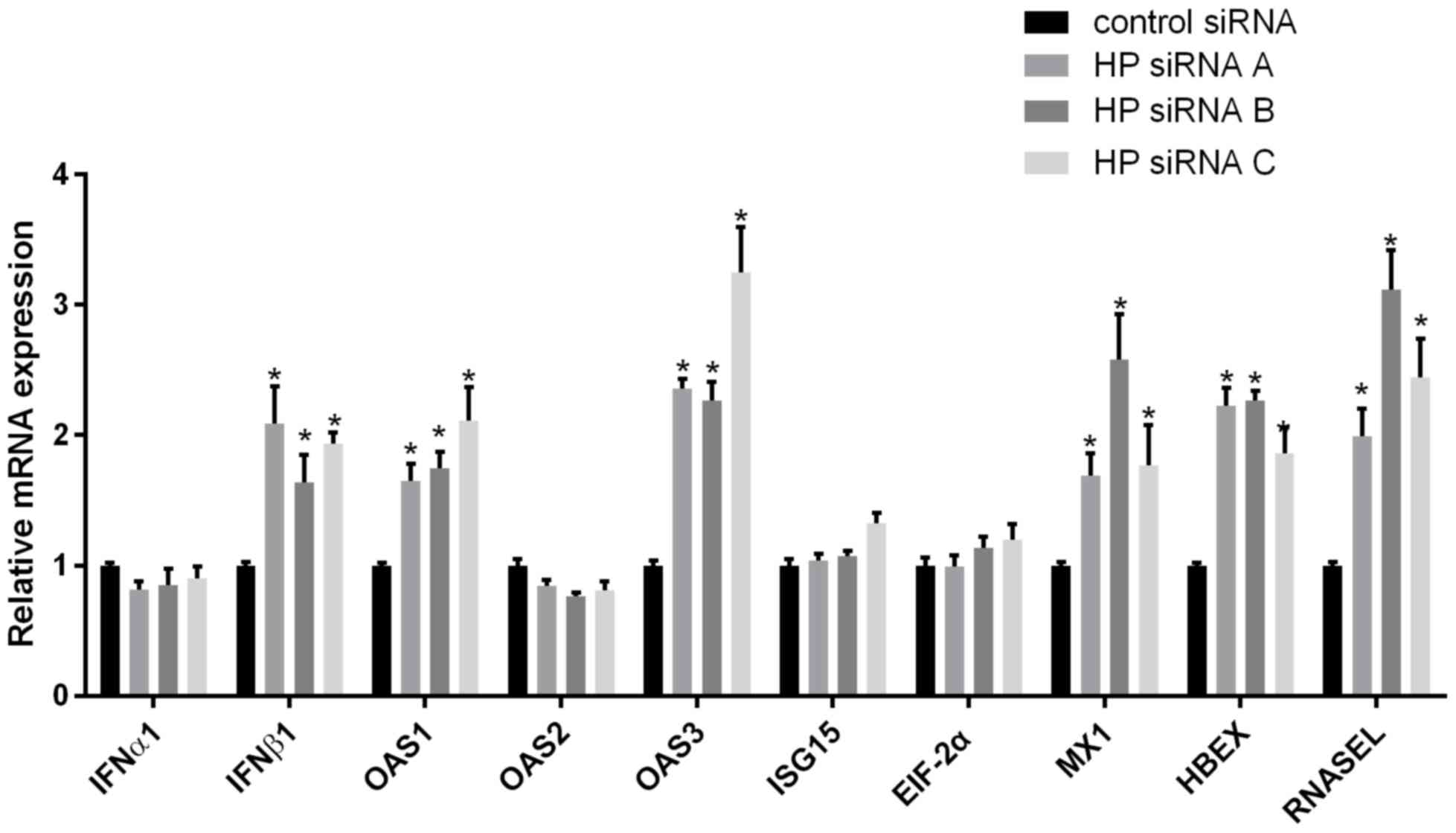|
1
|
GBD 2013 Mortality and Causes of Death
Collaborators: Global, regional, and national age-sex specific
all-cause and cause-specific mortality for 240 causes of death,
1990–2013: A systematic analysis for the global burden of disease
study 2013. Lancet. 385:117–171. 2015. View Article : Google Scholar : PubMed/NCBI
|
|
2
|
Torresi J and Locarnini SA: New
therapeutic strategies in the treatment of hepatitis B virus
infection. Expert Opin Investig Drugs. 8:289–305. 1999. View Article : Google Scholar : PubMed/NCBI
|
|
3
|
van Zonneveld M, Honkoop P, Hansen BE,
Niesters HG, Darwish Murad S, de Man RA, Schalm SW and Janssen HL:
Long-term follow-up of alpha-interferon treatment of patients with
chronic hepatitis B. Hepatology. 39:804–810. 2004. View Article : Google Scholar : PubMed/NCBI
|
|
4
|
Sung JJ, Tsoi KK, Wong VW, Li KC and Chan
HL: Meta-analysis: Treatment of hepatitis B infection reduces risk
of hepatocellular carcinoma. Aliment Pharmacol Ther. 28:1067–1077.
2008. View Article : Google Scholar : PubMed/NCBI
|
|
5
|
Lau GK, Piratvisuth T, Luo KX, Marcellin
P, Thongsawat S, Cooksley G, Gane E, Fried MW, Chow WC, Paik SW, et
al: Peginterferon Alfa-2a, lamivudine, and the combination for
HBeAg-positive chronic hepatitis B. N Engl J Med. 352:2682–2695.
2005. View Article : Google Scholar : PubMed/NCBI
|
|
6
|
Janssen HL, van Zonneveld M, Senturk H,
Zeuzem S, Akarca US, Cakaloglu Y, Simon C, So TM, Gerken G, de Man
RA, et al: Pegylated interferon alfa-2b alone or in combination
with lamivudine for HBeAg-positive chronic hepatitis B: A
randomised trial. Lancet. 365:123–129. 2005. View Article : Google Scholar : PubMed/NCBI
|
|
7
|
Terrault NA, Bzowej NH, Chang KM, Hwang
JP, Jonas MM and Murad MH; American Association for the Study of
Liver Diseases, : AASLD guidelines for treatment of chronic
hepatitis B. Hepatology. 63:261–283. 2016. View Article : Google Scholar : PubMed/NCBI
|
|
8
|
Rai AJ, Gelfand CA, Haywood BC, Warunek
DJ, Yi J, Schuchard MD, Mehigh RJ, Cockrill SL, Scott GB, Tammen H,
et al: HUPO plasma proteome project specimen collection and
handling: Towards the standardization of parameters for plasma
proteome samples. Proteomics. 5:3262–3277. 2005. View Article : Google Scholar : PubMed/NCBI
|
|
9
|
Zhang H, Li H, Yang Y, Li S, Ren H, Zhang
D and Hu H: Differential regulation of host genes including hepatic
fatty acid synthase in HBV-transgenic mice. J Proteome Res.
12:2967–2979. 2013. View Article : Google Scholar : PubMed/NCBI
|
|
10
|
Yang Y, Toy W, Choong LY, Hou P, Ashktorab
H, Smoot DT, Yeoh KG and Lim YP: Discovery of SLC3A2 cell membrane
protein as a potential gastric cancer biomarker: Implications in
molecular imaging. J Proteome Res. 11:5736–5747. 2012. View Article : Google Scholar : PubMed/NCBI
|
|
11
|
Kersey PJ, Duarte J, Williams A,
Karavidopoulou Y, Birney E and Apweiler R: The international
protein index: An integrated database for proteomics experiments.
Proteomics. 4:1985–1988. 2004. View Article : Google Scholar : PubMed/NCBI
|
|
12
|
Sells MA, Chen ML and Acs G: Production of
hepatitis B virus particles in Hep G2 cells transfected with cloned
hepatitis B virus DNA. Proc Natl Acad Sci USA. 84:1005–1009. 1987.
View Article : Google Scholar : PubMed/NCBI
|
|
13
|
Lepiller Q, Abbas W, Kumar A, Tripathy MK
and Herbein G: HCMV activates the IL-6-JAK-STAT3 axis in HepG2
cells and primary human hepatocytes. PLoS One. 8:e595912013.
View Article : Google Scholar : PubMed/NCBI
|
|
14
|
She S, Xiang Y, Yang M, Ding X, Liu X, Ma
L, Liu Q, Liu B, Lu Z, Li S, et al: C-reactive protein is a
biomarker of AFP-negative HBV-related hepatocellular carcinoma. Int
J Oncol. 47:543–554. 2015. View Article : Google Scholar : PubMed/NCBI
|
|
15
|
Schmittgen TD and Livak KJ: Analyzing
real-time PCR data by the comparative C(T) method. Nat Protoc.
3:1101–1108. 2008. View Article : Google Scholar : PubMed/NCBI
|
|
16
|
Zhou C, Simpson KL, Lancashire LJ, Walker
MJ, Dawson MJ, Unwin RD, Rembielak A, Price P, West C, Dive C and
Whetton AD: Statistical considerations of optimal study design for
human plasma proteomics and biomarker discovery. J Proteome Res.
11:2103–2113. 2012. View Article : Google Scholar : PubMed/NCBI
|
|
17
|
Chong PK, Lee H, Zhou J, Liu SC, Loh MC,
So JB, Lim KH, Yeoh KG and Lim YP: Reduced plasma APOA1 level is
associated with gastric tumor growth in MKN45 mouse xenograft
model. J Proteomics. 73:1632–1640. 2010. View Article : Google Scholar : PubMed/NCBI
|
|
18
|
Osiowy C, Coffin C and Andonov A: Review
of laboratory tests used in monitoring hepatitis B response to
pegylated interferon and nucleos(t)ide analog therapy. Curr Treat
Options Infect Dis. 8:177–193. 2016. View Article : Google Scholar : PubMed/NCBI
|
|
19
|
Buster EH, Hansen BE, Lau GK, Piratvisuth
T, Zeuzem S, Steyerberg EW and Janssen HL: Factors that predict
response of patients with hepatitis B e antigen-positive chronic
hepatitis B to peginterferon-alfa. Gastroenterology. 137:2002–2009.
2009. View Article : Google Scholar : PubMed/NCBI
|
|
20
|
Gygi SP, Rist B, Gerber SA, Turecek F,
Gelb MH and Aebersold R: Quantitative analysis of complex protein
mixtures using isotope-coded affinity tags. Nat Biotechnol.
17:994–999. 1999. View
Article : Google Scholar : PubMed/NCBI
|
|
21
|
Ross PL, Huang YN, Marchese JN, Williamson
B, Parker K, Hattan S, Khainovski N, Pillai S, Dey S, Daniels S, et
al: Multiplexed protein quantitation in Saccharomyces cerevisiae
using amine-reactive isobaric tagging reagents. Mol Cell
Proteomics. 3:1154–1169. 2004. View Article : Google Scholar : PubMed/NCBI
|
|
22
|
Javid J: Human haptoglobins. Curr Top
Hematol. 1:151–192. 1978.PubMed/NCBI
|
|
23
|
Andersen CBF, Stødkilde K, Sæderup KL,
Kuhlee A, Raunser S, Graversen JH and Moestrup SK: Haptoglobin.
Antioxid Redox Signal. 26:814–831. 2017. View Article : Google Scholar : PubMed/NCBI
|
|
24
|
Smithies O: Zone electrophoresis in starch
gels: Group variations in the serum proteins of normal human
adults. Biochem J. 61:629–641. 1955. View Article : Google Scholar : PubMed/NCBI
|
|
25
|
Lim SK: Consequences of haemolysis without
haptoglobin. Redox Rep. 6:375–378. 2001. View Article : Google Scholar : PubMed/NCBI
|
|
26
|
Sadrzadeh SM and Bozorgmehr J: Haptoglobin
phenotypes in health and disorders. Am J Clin Pathol. 121
(Suppl):S97–S104. 2004.PubMed/NCBI
|
|
27
|
Wang F, Huang W and Li A: Serum
haptoglobin suppresses T-lymphocyte functions following burns. Chin
Med Sci J. 11:180–183. 1996.PubMed/NCBI
|
|
28
|
Peta V, Tse C, Perazzo H, Munteanu M, Ngo
Y, Ngo A, Ramanujam N, Verglas L, Mallet M, Ratziu V, et al: Serum
apolipoprotein A1 and haptoglobin, in patients with suspected
drug-induced liver injury (DILI) as biomarkers of recovery. PLoS
One. 12:e01894362017. View Article : Google Scholar : PubMed/NCBI
|
|
29
|
Louagie H, Delanghe J, Desombere I, De
Buyzere M, Hauser P and Leroux-Roels G: Haptoglobin polymorphism
and the immune response after hepatitis B vaccination. Vaccine.
11:1188–1190. 1993. View Article : Google Scholar : PubMed/NCBI
|
|
30
|
Arredouani M, Matthijs P, Van Hoeyveld E,
Kasran A, Baumann H, Ceuppens JL and Stevens E: Haptoglobin
directly affects T cells and suppresses T helper cell type 2
cytokine release. Immunology. 108:144–151. 2003. View Article : Google Scholar : PubMed/NCBI
|
|
31
|
El Ghmati SM, Van Hoeyveld EM, Van Strijp
JG, Ceuppens JL and Stevens EA: Identification of haptoglobin as an
alternative ligand for CD11b/CD18. J Immunol. 156:2542–2552.
1996.PubMed/NCBI
|
|
32
|
Goldstein JI, Goldstein KA, Wardwell K,
Fahrner SL, Goonan KE, Cheney MD, Yeager MP and Guyre PM: Increase
in plasma and surface CD163 levels in patients undergoing coronary
artery bypass graft surgery. Atherosclerosis. 170:325–332. 2003.
View Article : Google Scholar : PubMed/NCBI
|
|
33
|
Kristiansen M, Graversen JH, Jacobsen C,
Sonne O, Hoffman HJ, Law SK and Moestrup SK: Identification of the
haemoglobin scavenger receptor. Nature. 409:198–201. 2001.
View Article : Google Scholar : PubMed/NCBI
|


















